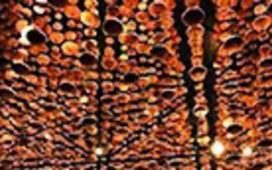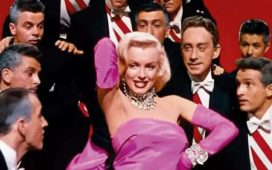This procession of mechanised floats celebrates diverse cultural traditions and modern developments from different parts of India. It has been an integral part of our Republic Day celebrations for 72 years now, ever since Jawaharlal Nehru and other visionaries conceptualised India’s annual national pageant.
The ceremonial parade’s mandate is at once to proclaim the united defence alertness of a sovereign nation, celebrate the diversity of its cultural traditions, and reaffirm its commitment to modernisation. This has meant not only looking inwards with cultural pride, but also gazing outwards to keep pace with progress – a past-forward of sorts.
Over seven decades, the stylistics of tableau-making for Republic Day has moved from simple yet effective configurations to complex juxtapositions of visual and performative facets of regional cultural identities. The compositional elements of these floats reveal an assimilation of many artistic influences – ancient, medieval, and modern.
Their imagery draws from the cultural motif of the ‘jhanki,’ a Hindi-Urdu expression that finds parallels in Prakrit ‘ajhakha,’ linguistically affiliated to Sanskrit ‘adhyaksha’: one who exercises supervision, or that which is perceptible to the eyes. These cognate words convey a sense of seeing, perceiving, witnessing, or getting a glimpse of the object of attention – in this case, a peek into a state’s culture.
In religious settings, ‘darshan’, the act of seeing the deity, is an established ritual in Hindu worship. Decorated jhankis that include static sculptures, and ‘tableaux-vivants’ (living pictures) with human performers in arrested motion survive as living traditions, especially in Krishna bhakti rituals. In Europe, tableaux-vivants are effectively employed in non-devotional or secular contexts as well.
A key feature of Republic Day floats is the idea of a procession or pageant – ‘yatra’ or ‘jatra’ in Indic languages. Such processions have a long history in India, having been part of royal, religious, and folk ritual practices in ancient and medieval times. The grand pageantry of Dilli Durbars during British colonial rule also drew from such living traditions, especially from spectacular processions and ‘jharokha-darshans’ of the preceding Mughal rule.

This painting (photo, above) pictures a chariot-festival with a jhanki of the deity placed on an intricately carved wooden chariot that is being pulled by a devout congregation at Srirangam. A man riding a decorated elephant leads the procession bearing the banner of Hanuman. The Republic Day tableau presented by Tamil Nadu in 2006 was inspired by such temple chariot (ter) festivals of South India.
Processional floats designed for Republic Day parades exhibit a range of activities and preoccupations beyond the religious. Their design elements often merge tradition and innovation to create mobile spectacles that are meant to evoke grand visions of regional and national pride.
Such noble intentions, however, do not always translate as aesthetic discernment. Cringe-worthy features of floats in more recent decades include a megalomaniacal obsession with gigantic sculptures and cut-outs of humans and animals that look more obnoxious than awe-inspiring. Small mercy, indeed, that these floats are not permanent installations, which makes the ‘colossal obsession’ less alarming as compared to the mammoth statues of leaders that have mushroomed in many parts of the country. ‘Small is beautiful’ makes for good economics and aesthetics.
What is more, blaring music and kitschy props take away from a tableau’s intended impact. Often it is the elegant armed forces parade and the spectacular air-show that convey greater aesthetic refinement – of skill, balance, harmony, symmetry, colour, proportion, and synchronicity. Perhaps, it is time for the grace and aesthetics of our defence parade to shine a light on cultural pageantry this Republic Day. Let’s wait and watch.









